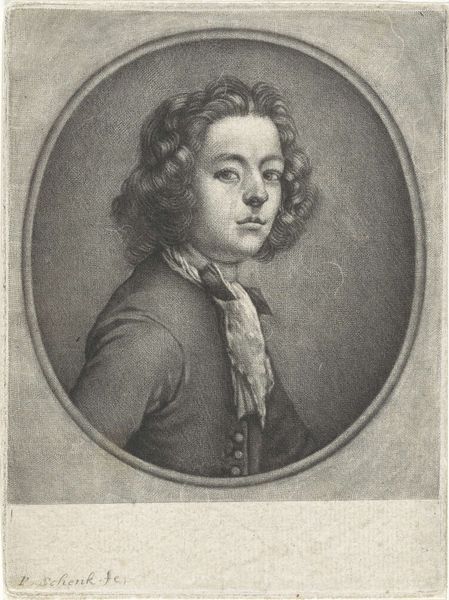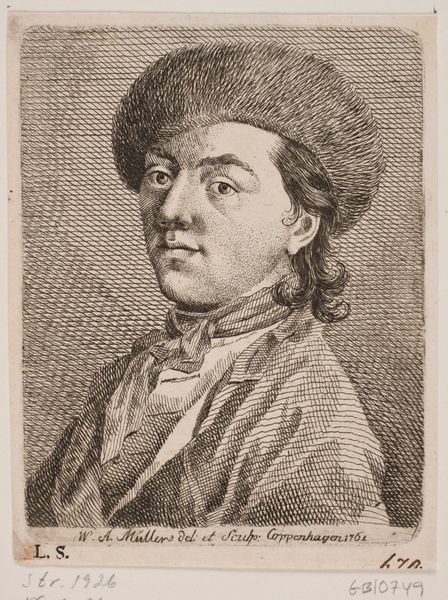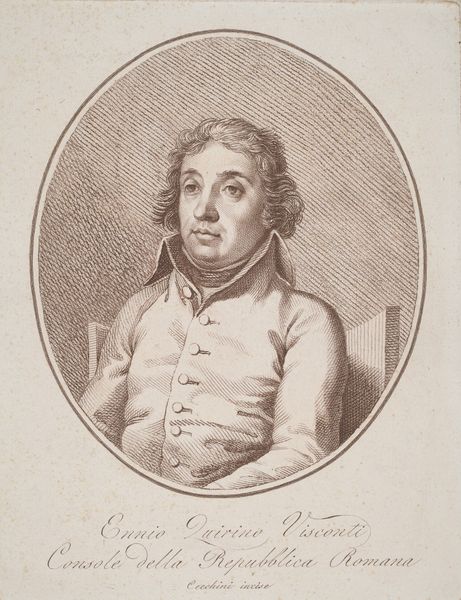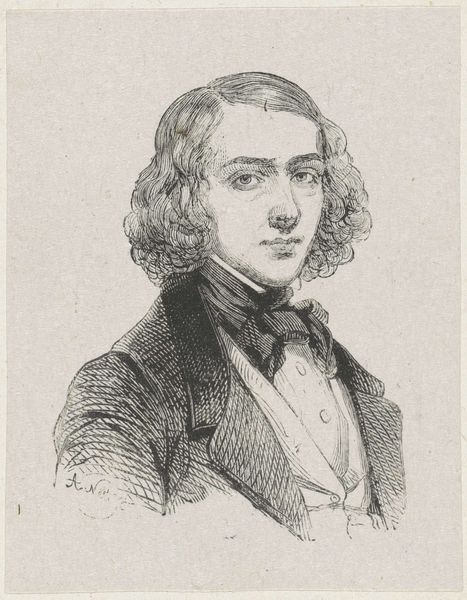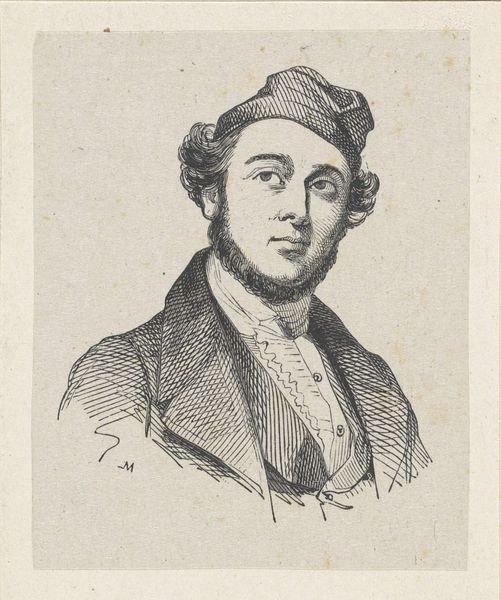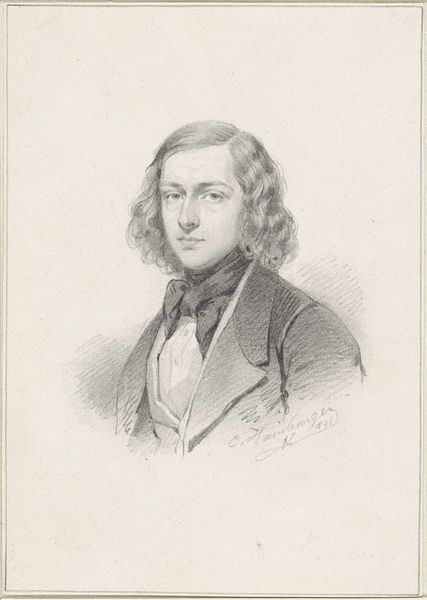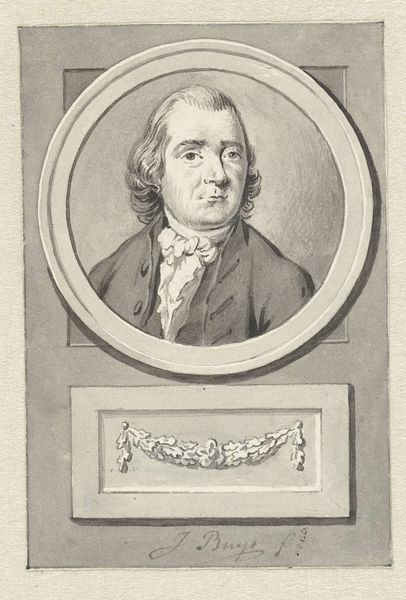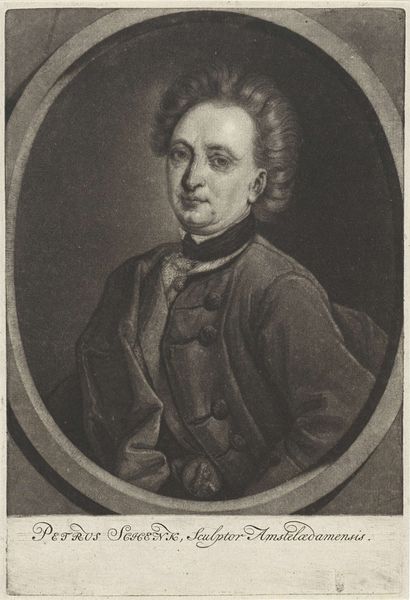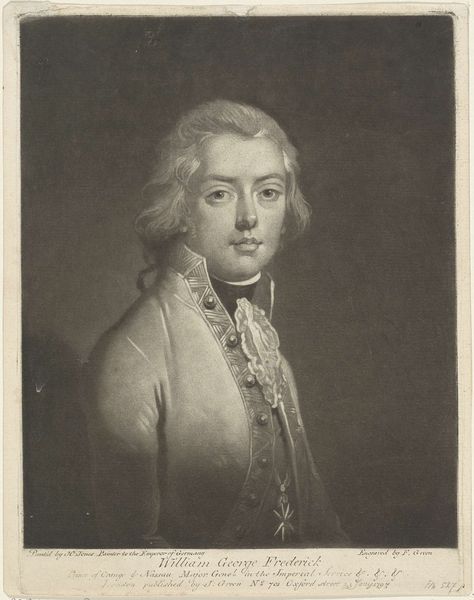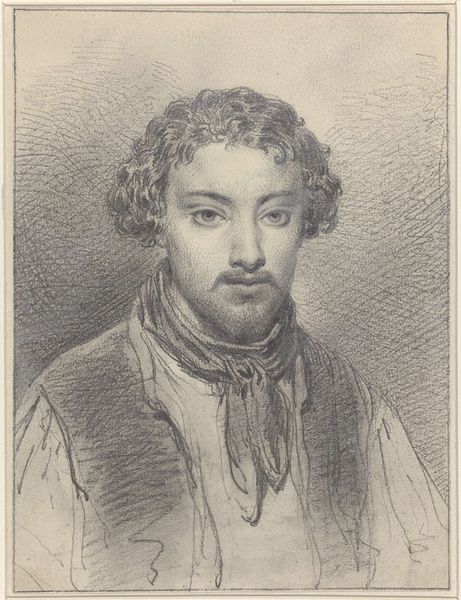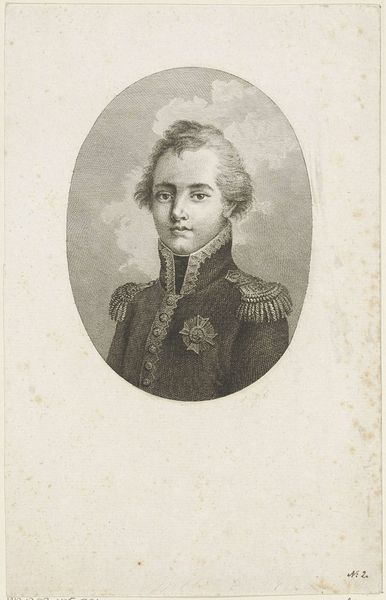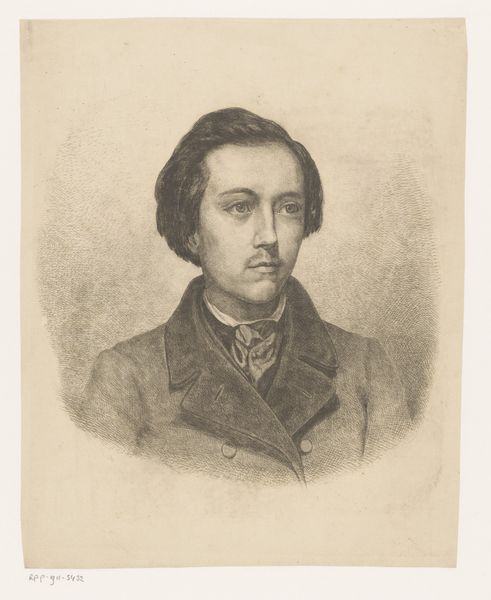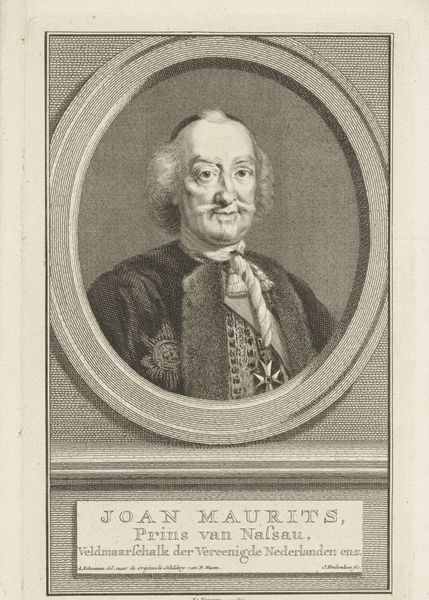
Dimensions: height 227 mm, width 135 mm
Copyright: Rijks Museum: Open Domain
Curator: Here we have Emil Ost's "Portret van Frederik, prins van Oranje-Nassau," dating somewhere between 1861 and 1931. An engraving, it exemplifies the portraiture style that was then infused with neoclassicist sentiments. Editor: It strikes me as having a certain stoicism... or perhaps that's simply the constraints of the engraving medium itself. There is a delicate simplicity to the way it has been produced, but also this strong presence about the Prince's attire. Curator: Indeed, the line work here is quite fascinating. Look closely, and you notice how Ost uses the cross-hatching technique to build up tonal value and define form. The face possesses soft lighting whereas the coat bears crisp lines! It speaks of neoclassical devotion to line. Editor: The means by which those tonal values were achieved really holds my attention here. It's the layering of labor - the artist's hand carving these very controlled and calculated lines, replicated to distribute a certain image of power... it feels almost industrial. Curator: Oh, definitely! And the clothing, of course, does a fair amount of work conveying power too! The decorations on his attire imply importance, a certain standing within society, achieved only by virtue of birth. Doesn't it beg the question: Who are we without the artifice of symbols? Editor: I think the clothing plays a significant role because it directly ties into a certain means of production and consumption of luxury during the Neoclassical period. Think of the tailors, seamstresses and artisans involved in the construction, as opposed to a raw emotive experience we read in it now. Curator: True, true. What do you take away from this after pondering on these points? Editor: It leaves me considering the chasm that always forms between the artist and audience... between the means of its production, circulation, consumption, and, lastly, our impression. A reminder, if anything. What of you? Curator: Well, for me, it is still the person. A simple reminder, rendered beautifully with precise lines, about who that man was, at least to Emil Ost. What stories were we, ourselves, creating around his presence? An artifact, frozen and precious.
Comments
No comments
Be the first to comment and join the conversation on the ultimate creative platform.
